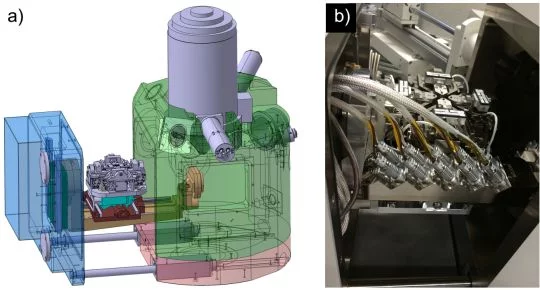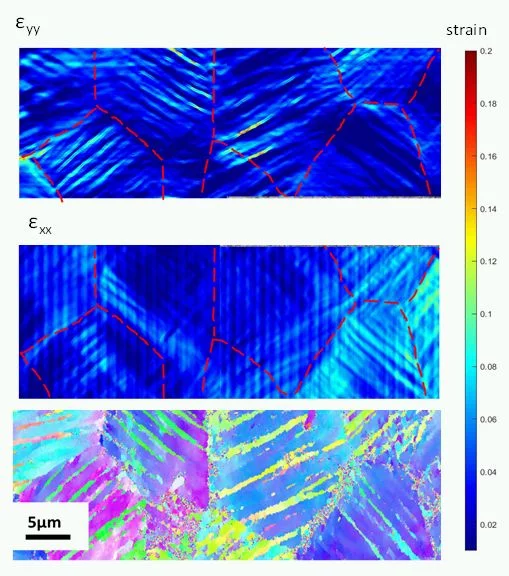Digital image correlation (DIC) of images obtained during mechanical testing brings possibilities to study localization of plastic deformation on specimen surface. This technique has been predominantly used in combination with optical cameras or microscopes. Coupling of DIC with a scanning electron microscopy (SEM) enables to obtain significantly more precise data down to the submicron scale. The results of such experiments can provide important data for further design of materials or manufacturing process optimization.
Currently two deformation rigs are available that allow performing in situ experiment inside a conventional SEM: a commercial uniaxial tensile/compression device (Kammrath&Weiss) with a load capacity up to 5kN and a home-made miniaturized biaxial deformation rig with a maximum load capacity of 40N on both axis. More information on the later machine can be found here and on the ERC MULTIAX website.
First experiments were performed on a superelastic NiTi alloy. Cruciform shaped samples are cut using a picosecond laser. Speckles for DIC were prepared by the remodeling of a thin-film gold deposited on the polished surface of the cruciform. During deformation bands of high strain associated with strong martensitic transformation can be observed. The measurements are combined with pre- and postmortem EBSD observations and in situ x-ray diffraction experiments.

